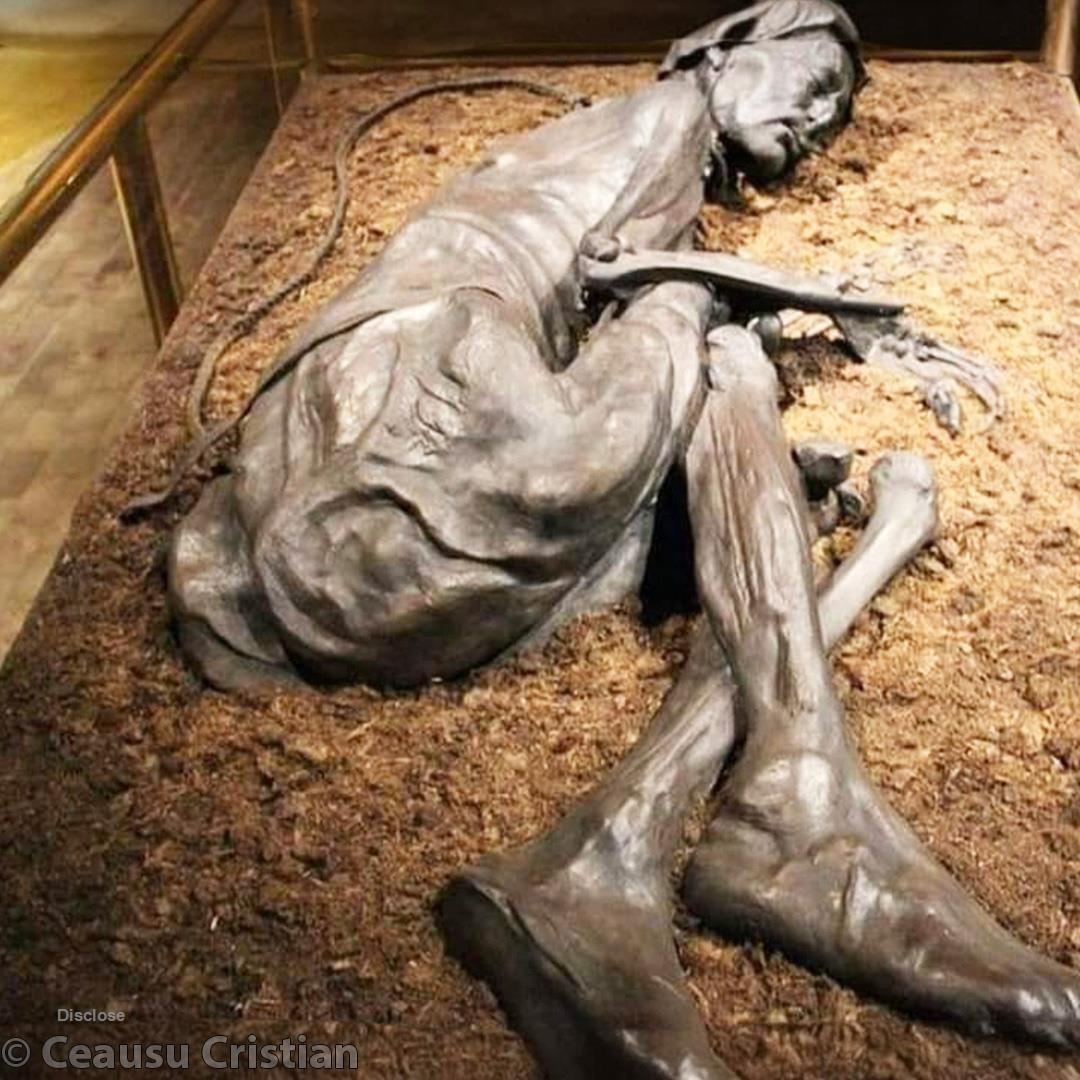Masterpiece ⚡️ on Nostr: Deep in the ancient peatlands of Denmark, the Tollund Man rests in eternal slumber, a ...
Deep in the ancient peatlands of Denmark, the Tollund Man rests in eternal slumber, a 2400-year-old symbol of Iron Age human sacrifice rituals. His remarkable preservation has enabled scientists to analyze his fingerprints and identify his last meal, an extraordinary achievement given the thousands of years that have elapsed. The Tollund Man, however, is merely a part of a broader, unsettling narrative of history.
The earliest recorded bog body, Koelbjerg Man, dates back to 8000 BCE in the Mesolithic period, though only his skeleton remains. In contrast, the oldest complete bog body, Cashel Man, originates from 2000 BCE during the Bronze Age. Most bog bodies, including Grauballe Man and Lindow Man, are from the Iron Age and are primarily discovered in northwest Europe, especially in Denmark, Germany, the Netherlands, the United Kingdom, Sweden, Poland, and Ireland.
These remains often show evidence of violent deaths and lack clothing, indicating they were likely sacrificed or executed as criminals, disposed of in bogs as part of a common cultural tradition. Bogs, regarded as transitional spaces connecting to other realms, might have been considered appropriate resting places for items viewed as hazardous to the living.
Modern theories suggest that these bog people might have been social outcasts, accused witches, or legal hostages killed in retribution for broken treaties, buried in accordance with ancient rituals. Unlike many ancient remains, bog bodies retain their skin and internal organs due to the unique conditions

Published at
2024-10-21 16:46:38Event JSON
{
"id": "200462390eccfa0dae3e57617a9e3b15c6adae6e9a8a2c2ced780ca89cc5f746",
"pubkey": "9c557e253213c127a86e333ff01c9f12f63091957efafd878d220a0e2cb1193e",
"created_at": 1729529198,
"kind": 1,
"tags": [
[
"imeta",
"url https://image.nostr.build/cbc9a1a2522e9726ecefad3ae8257b5ae52209038c976ab3608fbf3cbfeed307.jpg",
"blurhash eQH^^b0Lw@NexY~VRjnhazxa9axsR+t7kCD*WpkCtQV@9at6t7s.V@",
"dim 1080x1080"
],
[
"r",
"https://image.nostr.build/cbc9a1a2522e9726ecefad3ae8257b5ae52209038c976ab3608fbf3cbfeed307.jpg"
]
],
"content": "Deep in the ancient peatlands of Denmark, the Tollund Man rests in eternal slumber, a 2400-year-old symbol of Iron Age human sacrifice rituals. His remarkable preservation has enabled scientists to analyze his fingerprints and identify his last meal, an extraordinary achievement given the thousands of years that have elapsed. The Tollund Man, however, is merely a part of a broader, unsettling narrative of history.\n\nThe earliest recorded bog body, Koelbjerg Man, dates back to 8000 BCE in the Mesolithic period, though only his skeleton remains. In contrast, the oldest complete bog body, Cashel Man, originates from 2000 BCE during the Bronze Age. Most bog bodies, including Grauballe Man and Lindow Man, are from the Iron Age and are primarily discovered in northwest Europe, especially in Denmark, Germany, the Netherlands, the United Kingdom, Sweden, Poland, and Ireland.\n\nThese remains often show evidence of violent deaths and lack clothing, indicating they were likely sacrificed or executed as criminals, disposed of in bogs as part of a common cultural tradition. Bogs, regarded as transitional spaces connecting to other realms, might have been considered appropriate resting places for items viewed as hazardous to the living.\n\nModern theories suggest that these bog people might have been social outcasts, accused witches, or legal hostages killed in retribution for broken treaties, buried in accordance with ancient rituals. Unlike many ancient remains, bog bodies retain their skin and internal organs due to the unique conditions https://image.nostr.build/cbc9a1a2522e9726ecefad3ae8257b5ae52209038c976ab3608fbf3cbfeed307.jpg ",
"sig": "ec32bf17addb650370dda2d945b95f1fe511e94f335887ba004909ac16d1e7e036a2fbbd6a3df30ed8c0832b5cdd4c2052651e59feac3a3078411426c76c0961"
}

